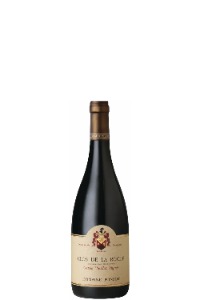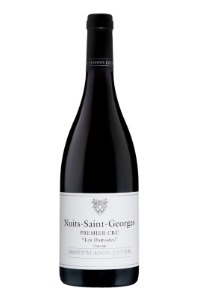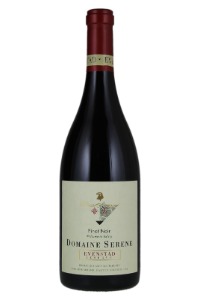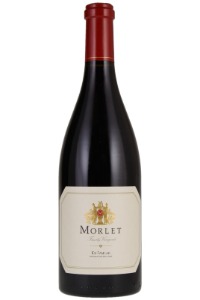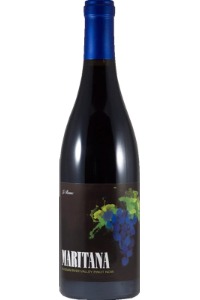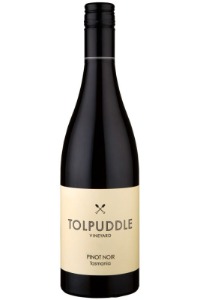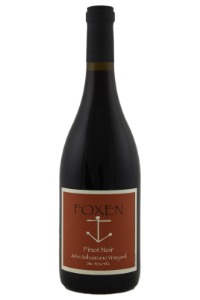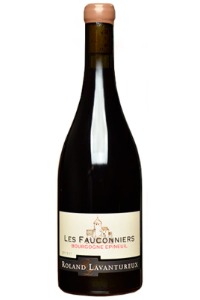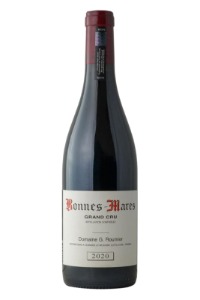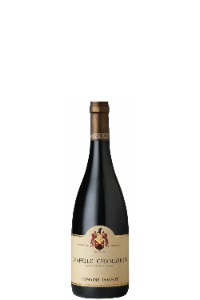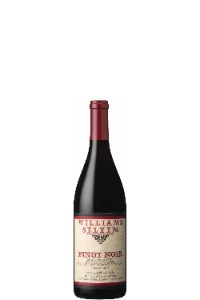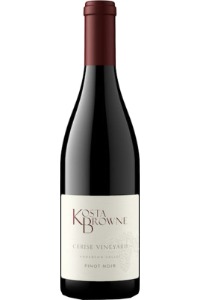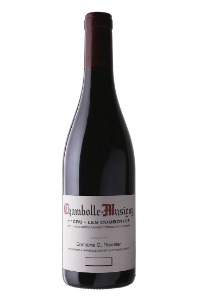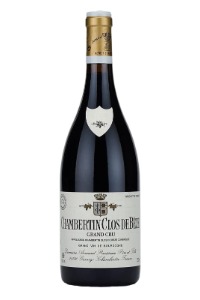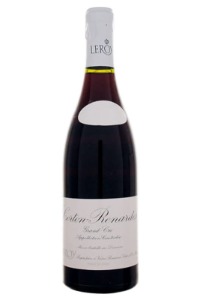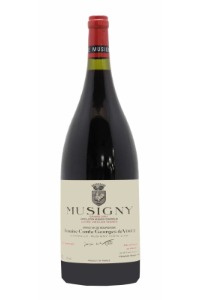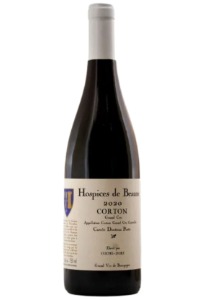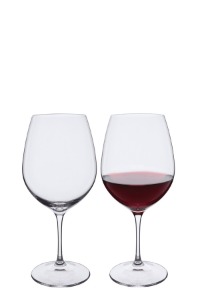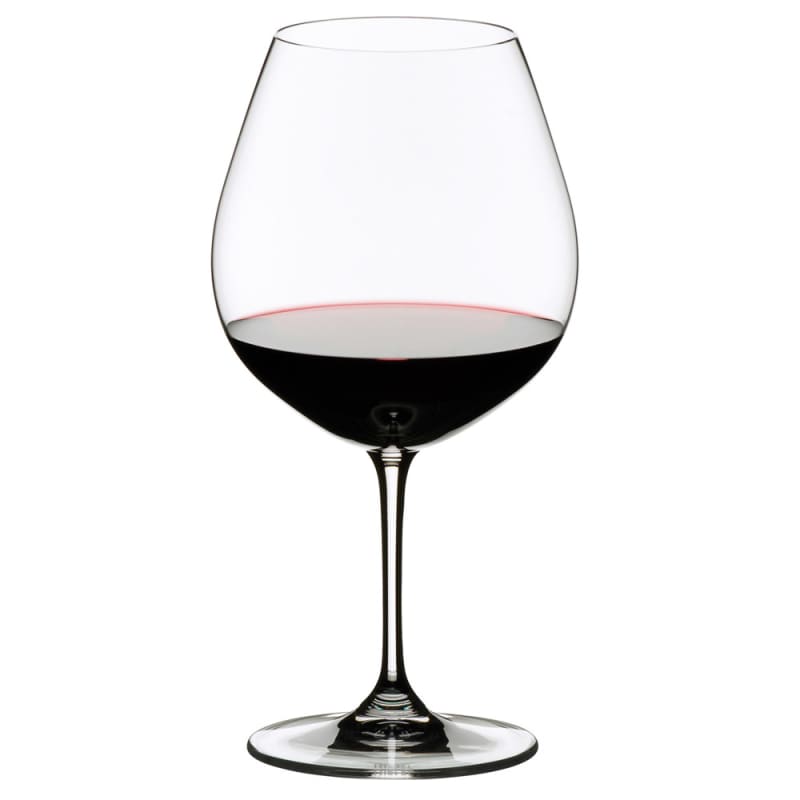Pinot Noir bottles not to miss in 2025
Renowned for its elegance, complexity and food friendliness, Pinot Noir is produced in a variety of cool climate regions, from French Burgundy to Oregon (USA). Come along to discover the top Pinot Noirs of 2025 to add to your cellar.

By
Last updated:
Table of Contents
10 Best Pinot Noir to try this year
Chambertin Cuvee Heritiers Grand Cru – Louis Latour 2022
France
Clos Vougeot Grand Cru – Ponsot 2015
France
Nuits-St-Georges Les Damodes Premier Cru – Domaine Hoffman-Jayer 2020
France
Evenstad Reserve Pinot Noir – Domaine Serene 2015
Oregon, US
En Famille Pinot Noir – Morlet 2020
California, US
Treinta y Dos Pinot Noir – Bodega Chacra 2022
Argentina
Martaella Vineyard Pinot Noir – Maritana Vineyards 2020
California, US
Pinot Noir – Tolpuddle Vineyard 2023
Australia
John Sebastiano Vineyard Pinot Noir – Foxen Vineyard 2021
California, US
Bourgogne Epineuil Les Fauconniers – Roland Lavantureux 2022
France
Looking for a good Pinot Noir? Our list highlights the 10 best Pinot Noirs based on a combination of critic scores and real customer appreciation, ensuring that the wines featured truly reflect what our readers value. Spanning different styles, price points and regions these bottles represent the most trusted and consistently praised Pinot Noir brands worth buying today.
Pinot Noir taste profile at a glance
| Attribute | Details |
|---|---|
| Grape Variety | 100% Pinot Noir |
| Origin | Burgundy (France), Trentino and Piedmont (Italy), California and Oregon (USA), Baden (Germany) and Central Otago (New Zealand) |
| Serving Temperature | 55-60°F (13-16°C) |
| Decanting | 30 minutes enhances aromatics in younger wines; at least 1 to 2 hours are needed for aged bottles |
| Aging Potential | 5 to 15 years (some Burgundies can age longer) |
| Flavor Profile | Red cherry, raspberry, cranberry, rose petal, mushroom, forest floor |
| Structure | Light to medium-bodied, silky tannins, vibrant acidity |
| Alcohol Content | 12.5% to 14.5% |
| Ideal Glass | Large Burgundy glass to enhance aroma complexity |
| Food Pairing | Roast duck, salmon, cod, mushroom risotto, soft cheeses |
| Top Regions | Côte d’Or, Willamette Valley, Central Otago, Sonoma Coast |
| Notable Producers | Domaine de la Romanée-Conti, Joseph Drouhin, Domaine Dujac, Kosta Browne, Felton Road |
A globally celebrated wine with subtle flavors, Pinot Noir looks pale but its smooth tannins and bright acidity leaves a lasting impression on your palate. Pinot Noir’s taste profile includes harmonious red fruit notes of cherries, raspberries and strawberries, earthy notes like mushrooms, as well as spices including cloves and vanilla. The spice notes are especially detectable in French oak aged Pinot Noir wines.
Did you know? Pinot Noir is the backbone of most sparkling wines, particularly Champagne! It improves the aging potential and provides structure to most bubbly wines.
Renowned Pinot Noir brands from around the world
Pinot Noir wines are produced by some of the most esteemed wineries worldwide, including Domaine de la Romanée-Conti in Burgundy (France) Marcassin in California (US) and Maison Joseph Drouhin, with French roots and an estate in Oregon (US). These renowned Pinot Noir producers are celebrated for their terroir expressive wines in different styles, receiving various awards and high scores from critics.
French Pinot Noir brands to look out for
French Pinot Noir brands typically craft wines in the “Old World” style, known for their emphasis on finesse and balance. Their wines tend to be elegant with vibrant acidity, silky tannins and complex red fruit and earthy notes. Primarily located in Burgundy (Bourgogne), the top French Pinot Noir brands include prestigious names like Domaine Georges & Christopher Roumier, Domaine Armand Rousseau and Domaine Ponsot. Here are two of our recommended Bourgogne Pinot Noirs with their tasting notes and ratings.
Bonnes-Mares Grand Cru – Domaine Georges & Christophe Roumier 2020 – France
Chapelle-Chambertin Grand Cru – Ponsot 2021 – France
New world California Pinot Noir brands
California Pinot Noir brands include big names like Olema, Williams Selyem and La Crema, whose 2021 Sonoma Coast Pinot Noir was Wine Spectator’s Top Wine Value of 2023. New world producers tend to produce Pinot Noir in a range of styles, with cooler, coastal areas yielding wines with higher acidity and warmer regions like Paso Robles producing Pinot Noir that is more full bodied. Below you will find a selection of our favorite bottles, including some of the best Pinot Noirs in Napa:
Rochioli Riverblock Pinot Noir – Williams-Selyem 2020 – California, US
Cerise Vineyard Pinot Noir – Kosta Browne 2020 – California, US
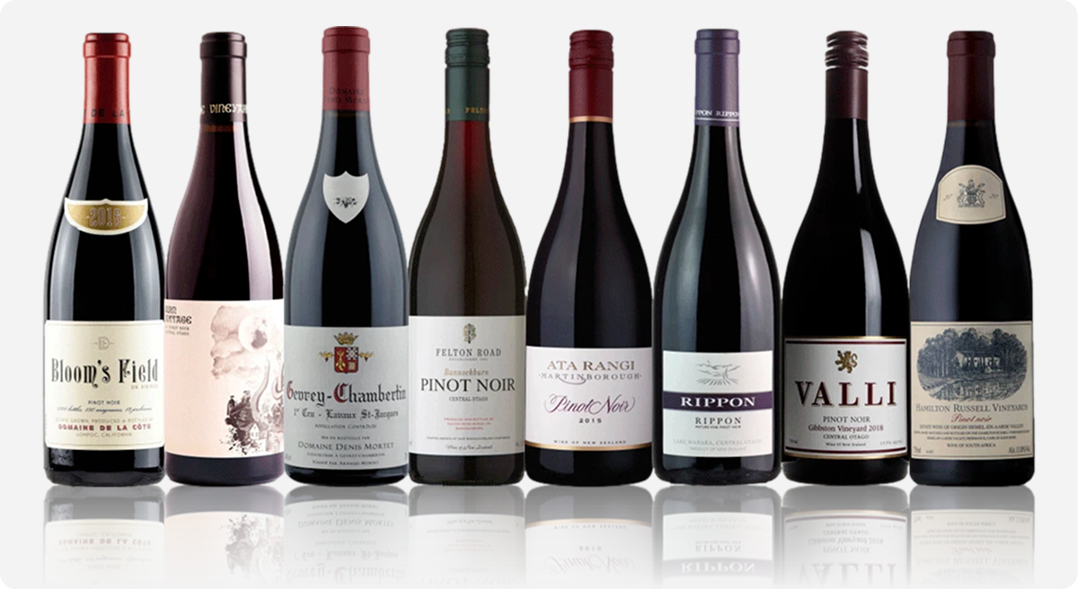
Pinot Noir wine price guide
Pinot Noir wines span a wide price range, typically starting around $25 and reaching $300 or more for top rated bottles. The Pinot Noir price depends on factors like vintage, with older wines often commanding a higher value. The reputation of the winemaker also plays a key role. A nice Pinot Noir from top names from Burgundy (such as Domaine de la Romanée-Conti), Oregon, Sonoma or Kosta Browne, tend to cost more. Vineyard location and classification, including Grand Cru and single vineyard AVAs, also affect the prices. See below our selection of highly rated Pinot Noir bottles distributed by price range:
1. Entry Level Pinot Noir: Willamette Valley Pinot Noir – Rex Hill 2021 – Oregon, US
2. Value Pinot Noir: Premium Old Vines Pinot Noir – Bass Phillip 2019 – Australia
3. Mid Tier Pinot Noir: Chambolle-Musigny Les Combottes Premier Cru – Domaine Georges & Christopher Roumier 2020 – France
4. Premium Pinot Noir: Chambertin Clos de Beze Grand Cru – Domaine Armand Rousseau Pere et Fils – France
Fun fact: winemakers call Pinot Noir the “heartbreak grape”! It bruises easily, ripens early, hates temperature swings and is famously hard to grow… but produces some of the world’s most elegant wines!
TOP 3 Pinot Noir red wine bottles for collectors
Collector bottles are more than just exceptional wines; they make thoughtful, prestigious gifts and can also serve as long term investments.
One of the most popular wines in the world, Pinot Noir has captivated collectors with its elegant yet complex flavor profile. Produced by historic estates in Burgundy and innovators in California’s Russian River Valley, the finest Pinot Noirs have been known to perform excellently at auctions. One particularly record breaking bottle was the 1945 vintage of Domaine de la Romanée-Conti, which sold for $558,000 at a 2018 Sotheby’s auction.
Corton-Renardes Grand Cru – Domaine Leroy 2001 – France
Le Musigny Grand Cru – Domaine Jacques-Frédéric Mugnier 2017 – France
Musigny Grand Cru Vieilles Vignes – Domaine Comte Georges de Vogue 2021 – France
Hospices de Beaune Corton Grand Cuvee Docteur Peste – Domaine Coche-Drury 2020 – France
The selections above represent some of the most highly rated and cellar worthy Pinot Noir red wines available for collection, limited in production, rich in character and built to age with grace.
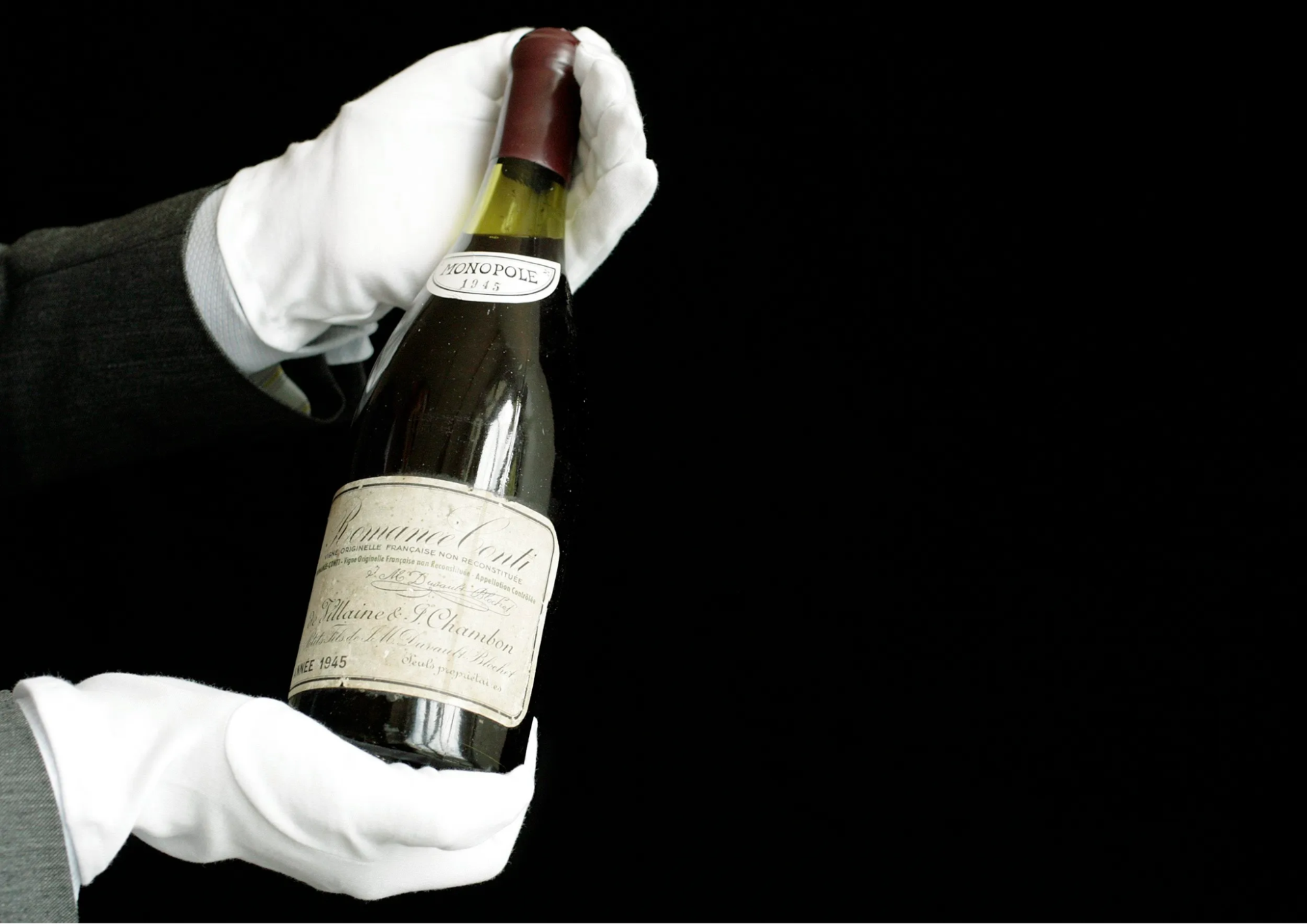
What are the best Pinot Noir vintages?
With Pinot Noir wines, the vintage isn’t just a year, it’s a fingerprint. This sensitive grape reflects even the slightest shifts in climate, making each harvest unique. Cooler years bring lifted acidity and floral finesse while warmer ones offer depth, ripeness and power.
That’s why vintage matters and why we’ve handpicked the best rated Pinot Noir vintage bottles with top critic scores and excellent aging potential.
| Pinot Noir Vintage | Good Pinot Noir | Rating | Tasting Notes | Vintage Characteristics |
|---|---|---|---|---|
| 2023 | Royal St. Robert Cuvee Pinot Noir 2023 – RAEN – California, US | 5/5 | Captivating aromas of crushed wild berries, black cherries and rose petals give way to black tea and bergamot notes. | A late harvest year in California that started with a wet spring and warm weather in June and July, yielding gorgeous, fresh and succulent wines. |
| 2022 | Clos De Vougeot 2022 – Meo Camuzet – France | 5/5 | Deliciously intense notes of spice, black fruits and sandalwood on the palate lead to a lingering finish. | Warm and dry weather gave a surprisingly balanced wine, thanks to rain in June. Wines show concentration, ripeness and freshness. |
| 2019 | Clos De La Roche Grand Cru 2019 – Domaine Lignier-Michelot – France | 4.9/5 | Rich and complex wine with silky tannins and vibrant acidity, as well as balanced flavors of red cherry, raspberry and dark plum. | An exceptionally long and hot summer provided the ideal conditions for Pinot Noir maturation. The results are balanced wines with moderated tannins. |
| 2018 | Elton Vineyard Pinot Noir 2018 – Lavinea – Oregon, US | 4.9/5 | Youthful and focused core of fruit is framed by polished tannins and layers of raspberry, forest floor, dusky spice and black cherry. | The year was marked by summer heat that produced generous yields and healthy fruit, making Pinot Noirs with ripe fruit flavors and high sugar. |
| 2017 | Domaine de Bellene Vieilles Vignes 2017 – Nuits-Saint-Georges – France | 4.8/5 | Pure and elegant aromas of red roses, wild red berries, lavender and truffle, with a long, delicate finish. | The 2017 vintage in Burgundy was classic and elegant, with balanced ripeness, refined tannins and vibrant acidity. |
| 2014 | Vine Hill Road Pinot Noir 2014 – Father John – California, US | 4.8/5 | Medium bodied Pinot Noir with seductive notes of redcurrant, strawberry and raspberry accompanied by a touch of spice. | A cool, early vintage producing refined, lower alcohol wines with vivid acidity and purity. |
How to serve Pinot Noir wines
Here are some common tips you can use to serve Pinot Noir at its full potential:
- Store your Pinot Noirs in a cool, dark place around 12 to 14°C (53 to 57°F). Keeping a consistent temperature helps to avoid contractions and expansions that may destroy the wine’s quality.
- Serve it between 55-60°F (13-16°C), with the ideal temperature being at 60°F (16°C). The subtle fruity and earthy notes in this lighter bodied red are best highlighted when it is served chilled).
- Decant aged Pinot Noir wines for 1 to 3 hours and young bottles for a shorter period between 15 to 30 minutes to help soften its flavors.
- Must have accessories to serve Pinot include: Burgundy or tulip wine glasses, a basic decanter and a wine stopper to keep opened bottles fresh!
Pinot Noir food pairing essentials and serving tips
Effectively pairing Pinot Noir with food requires a basic knowledge of its structure, flavor profile and aging style. Whether you’re pouring a casual glass of Decoy Pinot Noir or splurging on collectible bottles, this varietal performs best with complementary dishes. Think light proteins, earthy ingredients like mushrooms and truffles, as well as soft cheeses. See below our Pinot Noir food pairing suggestions made across a wide range of options:
| Food | Best Bottle | Rating | Aged | Type & Structure |
|---|---|---|---|---|
| Sweet and spicy chicken, grilled turkey, duck confit, red wine braised rabbit | Flowers Sonoma Coast Pinot Noir 2023 – California, US | 5/5 | 1–3 years | Dry, red fruit, silky, fresh acid |
| Charcuterie boards, medium aged cheese, bolognese fettucini | Bien Nacido Estate Bien Nacido Vineyard Pinot Noir 2021 – California, US | 5/5 | 2-5 years | Fruity, soft tannins, medium body |
| Ribeye steak, grilled lamb leg, venison, pork roast | Iris Pinot Noir 2018 – 1849 – California, US | 4.9/5 | 5–7 years | Crisp, bright, savory spices of red fruit and leaves. |
| Gruyere, Gouda, herb crusted pork loin, beef carpaccio | Côte de Beaune Knights Templar Cuvée 2018 – Chevalier de la Cree – France | 4.9/5 | 4–6 years | Balanced acidity, medium bodied, soft tannins, floral |
| Pasta alfredo, mushroom risotto, beef noodle casserole, Mexican lasagna | Chanson Père & Fils Beaune Bressandes Premier Cru 2021 – France | 4.8/5 | 2-5 years | Balanced, easy drinking, juicy |
| Grilled salmon, garlic butter cod, pickled herring | Estate Pinot Noir 2022 – Eyrie – Oregon, US | 4.8/5 | 2-5 years | Light bodied, vibrant acidity, fresh fruit and fine tannins |
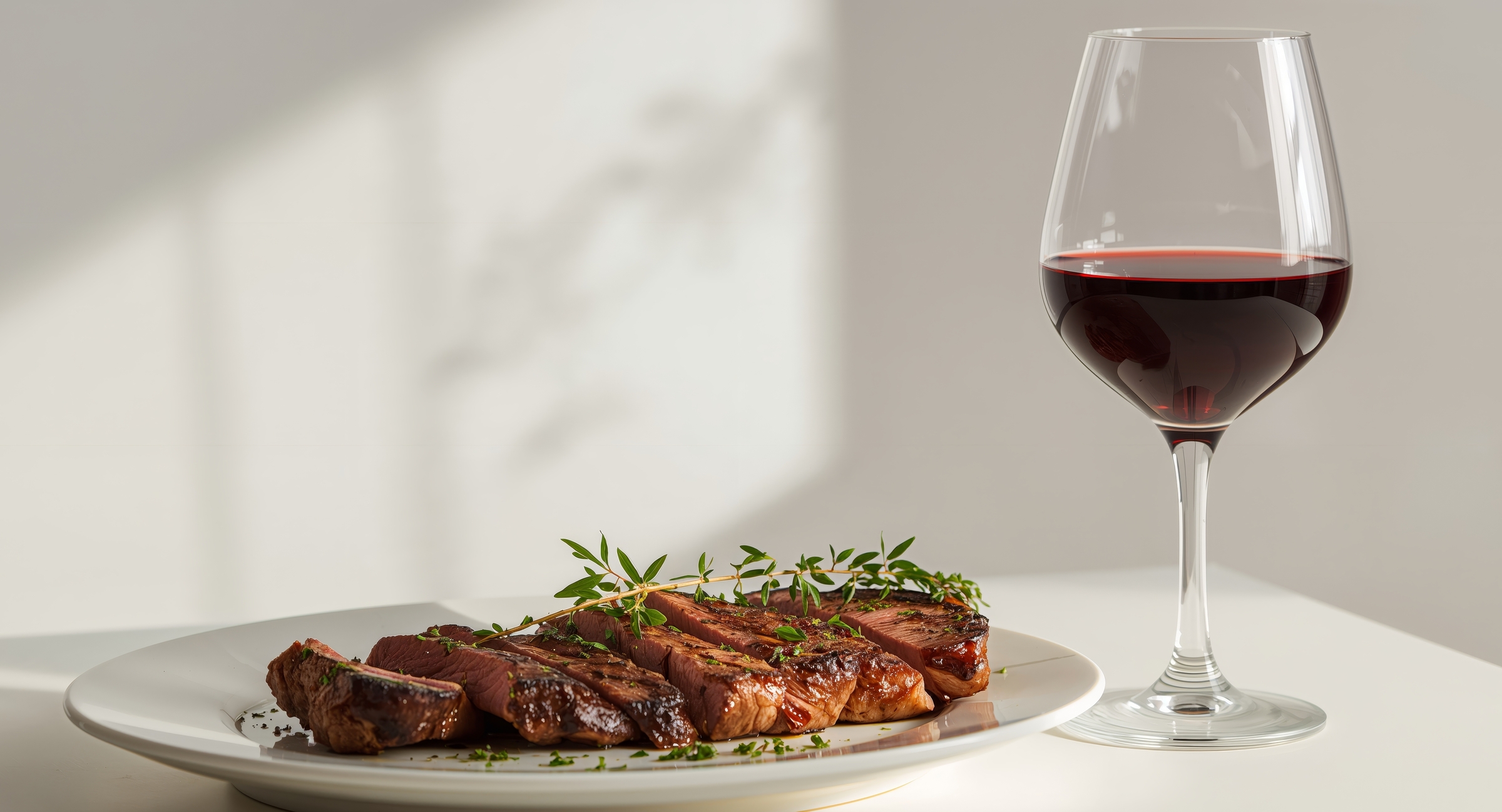
Pinot Noir glasses to sip in style
Pinot Noir benefits from glassware designed to emphasize its delicate aromas and nuanced structure. The ideal Pinot Noir glass has a wide, tulip shaped bowl that allows the wine to breathe while directing aromas toward the nose, enhancing the delicate notes of red fruit, earth and spice.
This shape also softens the wine’s acidity and highlights its silky texture, especially in older vintages.
Try one of our recommendations for great Pinot Noir glasses below.
Dartington Wine Master Burgundy Red Wine Glass (Set of 2)
Waterford Pinot Noir Wine Glass (Set of 2)
Riedel Vinum Pinot Noir-Burgundy Glass (Set of 2)
Riedel O Pinot Noir-Burgundy Glasses (Set of 2)
What is Pinot Noir wine and how is it made?
Pinot Noir is an elegant, light to medium bodied red wine crafted from grapes of the same name. It typically has red fruit flavors and lower tannins due to the reduced phenols in the grape skins. Pinot Noir grapes are primarily used to produce red wines but they also find lovely expressions in rosés and other sparkling wines such as Champagne and Franciacorta, adding a generous depth and array of red fruit flavors.
Originally from the Burgundy region in France, Pinot Noir cultivars now exist in vineyards worldwide, especially in Italy, California, Oregon, New Zealand and Germany (where it is known as Spatburgunder)! Pinot Noir wines are often labeled by origin, such as Bourgogne Pinot Noir (an AOC in Burgundy, France) whose production is defined by strict regulations, as well as various AVAs in the US.
Let’s see in detail how Pinot Noir wine is made:
- The pale skinned Pinot Noir grapes are harvested at night or early in the morning to keep them fresh. Because it is an early ripening grape, the grapes are often picked in late summer and early fall (between August and October).
- Harvested grapes are sorted and destemmed to give softer wines lacking the bitter flavors that might have been imparted by the stem. They are then crushed lightly to release juice.
- Fermentation is typically warm, around 86-90°F or 30-31°C and carried out in stainless steel tanks. As Pinot Noir grapes ferment, the skins, seeds and stems may float to form a cap at the top, requiring winemakers to mix them back into this juice. They can do this by pumping down or pumping juice over the cap. Fermentation times vary depending on the desired flavor profile and alcohol content.
- Aging occurs in French oak barrels for nine to twelve months. The wine may be aged on its lees to develop added complexity and softer tannins. Some producers practice “racking”, a process of transferring wines from one barrel to another, although a drawback of doing this is excessive oxygen exposure.
- Blending and bottling are the final steps. Wines from different barrels may be combined and bottled together for a more balanced taste profile.
Note: grapes may undergo an optional ‘cold soak’ before fermentation for silkier tannins and a deeper color.
The many faces of the Pinot Noir grape: red, sparkling and rosé
Although the classic expressions of the Pinot Noir grape are the approachable red wines that we all love, the black and thin grapes can also be crafted into rosés and white wines!
Let’s have a look at some of the wine styles that the versatile Pinot Noir grapes can be used to produce:
- Pinot Noir red wines range from light to medium bodied and may be bright and fruitforward or spicy and earthy, depending on the winemaking process.
- Sparkling Pinot Noir wine is the result of combining the pale red grapes with Chardonnay to yield fine, bright and structured bubbly wines with delicate red fruit notes.
- Pinot Noir rosés are typically dry, created by allowing crushed grape skins and juice to have a short period of skin contact before fermentation. These elegant and balanced wines are fresh, floral and fruity with the length of skin contact determining the final wine color.
- White Pinot Noirs, also called Blanc de Noirs, are produced by gently pressing the grapes immediately after harvesting. Doing so separates the juice from the skins without transferring the red color.
Did you know? Pinot Noir is the “parent” grape for many other varieties, including Chardonnay, Pinot Gris and Pinot Blanc!
How does terroir shape Pinot Noir’s style and aging potential?
Pinot Noir is famously expressive of its terroir, producing dramatically different styles depending on Pinot Noir’s production region. While France and the U.S. lead in prestige and volume, other regions like Italy, Germany and South Africa also contribute exciting variations in flavor, structure, price and aging potential.
Top Pinot Noir production regions at a glance:
- Burgundy (France) serves as the home of some of the best Pinot Noir wines, offering complex, earthy and age worthy reds. The grape thrives in the region’s cool climate and limestone rich soils, producing a wide range of styles that may be light or more full bodied.
Top areas: Côte de Nuits, Côte de Beaune - Willamette Valley (Oregon, USA) is a world renowned producer of Pinot Noir and Willamette Valley accounts for nearly 90% of the state’s output. This region’s cool nights and warm summers promote slow ripening and the development of nuanced wines with fresh red fruit aromas, bright acidity and floral lift.
Top areas: Dundee Hills, Eola-Amity Hills - Sonoma Coast (California, USA) Pinot Noir production is characterized by its coastal influence, which results in balanced and expressive wines with cherry, spice and silky textures.
Top areas: Russian River Valley, Petaluma Gap - Santa Barbara County (California, USA): Pinot Noir is the second most planted grape in this region, with different areas producing distinct styles. Generally, Santa Barbara Pinots are warmer climate wines with robust ripe fruit, spice notes and a lush mouthfeel.
Top areas: Sta. Rita Hills, Santa Maria Valley - Alto Adige (Südtirol, Italy): High altitudes, well ventilated locations and cool climates helps to preserve the finesse and high quality of their Pinot Noirs.
Top areas: Manzon, Egna, Appiano - Central Otago (New Zealand): a major producer of bold, fruit driven Pinot with minerality and bright acidity. The region has an ideal cool and continental climate that gives rise to rich and complex wines with excellent structure.
Top areas: Bannockburn, Gibbston Valley - Mornington Peninsula (Australia) is a prominent wine region known for its high quality Pinot Noir, which accounts for nearly half of its total grapevine plantings. The climate here is cool and maritime, yielding coastal Pinot Noirs with balanced soft red berry notes, fine tannins and light spice.
Top areas: Red Hill, Main Ridge - Germany is the world’s third largest producer of Pinot Noir, where it is locally known as Spätburgunder. The style of Pinot Noir here is influence by the cool climate, with herbal, savory tones and surprising aging potential.
Top areas: Ahr, Baden, Pfalz
Moreover, regions like Tasmania (Australia), Ahr (Germany), Casablanca Valley (Chile) and Elgin (South Africa) are emerging cool climate areas with limited but growing Pinot Noir production, offering distinct styles and excellent value. These regions may not rival Burgundy or California in scale, but they add exciting diversity.
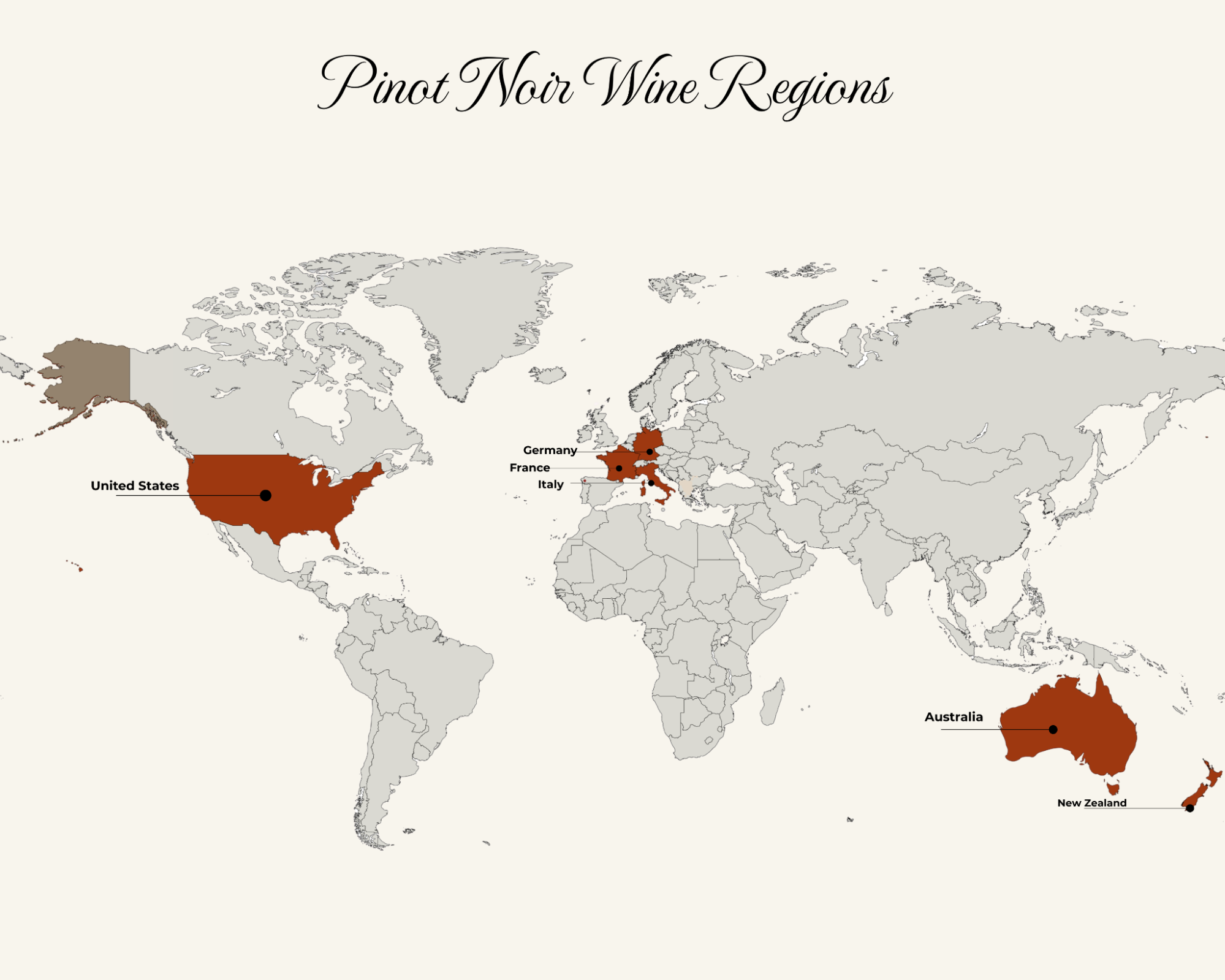
How Pinot Noir wines stacks up against Cabernet Sauvignon and Merlot
Pinot Noir, Cabernet Sauvignon and Merlot are three iconic red grape varieties with distinct characteristics. Pinot Noir is the most delicate, producing light bodied wines low in tannins and anthocyanins with high acidity and complex aromas of red fruit, earth and florals. It thrives in cool climates but is highly sensitive to disease and yield, making it difficult to cultivate.
Cabernet Sauvignon, by contrast, is bold and structured, with high tannins and deep color, driven by elevated anthocyanins and methoxypyrazines, yielding flavors of blackcurrant, graphite and green pepper. It favors warmer regions and ages exceptionally well.
Merlot sits in between: rounder and softer than Cabernet, yet fuller than Pinot Noir, with plum and chocolate notes. It ripens earlier than Cabernet and is less demanding in the vineyard. While good Pinot Noir highlights finesse and terroir expression, Cabernet is prized for longevity and Merlot for approachability, each serving a different purpose in the cellar and cuisine.
| Wines | Wine Style | Top Wine | Rating | Tasting Notes |
|---|---|---|---|---|
| Cabernet Sauvignon vs Pinot Noir | Cabernet Sauvignon is fuller bodied than Pinot Noir, with bold tannins, flavors of dark fruit and earthiness. | One Point Five Cabernet Sauvignon 2022 – Shafer Vineyards – California, US | 5/5 | Full bodied and velvety with ripe tannins and hints of red plum, black cherry, coffee, cassis and sage. |
| Merlot vs Pinot Noir | Merlot is fuller bodied, with flavors of rich dark fruit, velvety tannins, oak spices and a smooth finish when compared to Pinot Noir. | Napa Valley Merlot 2021 – Keenan – California, US | 4.9/5 | Round, fruity and creamy with intense aromas of blackberry, chocolate wafer, vanilla and sweet spice. |
| Syrah (Shiraz) vs Pinot Noir | Syrah is bold and spicy, with a fuller bodied profile and robust flavors of dark berry, pepper and smoky undertones that Pinot Noir doesn’t have. | Rodney’s Vineyard P2KV Syrah 2021 – Tensley – California, US | 4.8/5 | Expressive, with great acidity and chewy tannins accompanied by flavors of cherry, plum, black pepper and lilacs. |
Each of these grape varietals excels under specific conditions and the “best” often comes down to context, be it climate, cuisine or personal taste.
FAQs on Pinot Noir
What is the Pinot Noir wine grape?
Pinot Noir is a thin skinned red grape variety known for producing elegant, light bodied wines with complex flavors. Originating from Burgundy, France, it is prized for its notes of cherry, raspberry, earth and spice. Due to its delicate nature and difficulty to grow, it’s often referred to as the “heartbreak grape,” but delivers exceptional wines when grown in ideal conditions.
What are Pinot Noir wine prices?
Pinot Noir wine prices vary greatly depending on origin and quality. Entry level bottles from regions like California or Chile can start around $20–$30, while premium Burgundy wines can exceed $100, with Grand Cru bottles reaching thousands. Generally, expect to pay more for well rated vintages and wines from prestigious producers or regions with a reputation for excellence.
What are the best years for Pinot Noir wine?
Some of the best years for Pinot Noir include 2002, 2005, 2009, 2010, 2015 and 2019, especially for Burgundy. These vintages offered ideal growing conditions that resulted in balanced, age-worthy wines with finesse. However, the best year can also depend on the region, with excellent vintages also found in Italy, Oregon, California and New Zealand in similar years.
What are the best Pinot Noir vintages?
Some of the best Pinot Noir vintages include 2014, 2019, 2022 and 2023, especially for Burgundy. These vintages offered ideal growing conditions that resulted in balanced, age worthy wines with finesse. However, the best year can also depend on the region, with excellent vintages found in Italy, Oregon, California and New Zealand in similar years.
Is Pinot Noir wine produced in Burgundy?
Yes, Pinot Noir is famously produced in Burgundy, France, its ancestral home and benchmark region. Burgundy’s terroir, particularly in areas like Côte de Nuits, is considered ideal for growing Pinot Noir, yielding refined, earthy wines with aging potential. The region’s classification system, including Premier Cru and Grand Cru vineyards, highlights the wine’s prestige and global influence.
What are the best Pinot Noir brands?
Some of the best Pinot Noir brands include Domaine de la Romanée-Conti, Domaine Leroy and Domaine Dujac in Burgundy. Outside France, top names include Kosta Browne and Williams Selyem in California and Felton Road in New Zealand. These producers are praised for their meticulous vineyard practices and ability to capture Pinot Noir’s nuance and complexity.
Is Pinot Noir wine produced only in France?
No, Pinot Noir is not produced only in France. While it originated in Burgundy, it’s now grown worldwide. Top producing regions include Italy, Oregon, California, New Zealand, Germany (where it’s called Spätburgunder) and Chile. Each region imparts its own character to the wine, from earthy and structured in Burgundy to fruity and lush in New World expressions.
Where is Pinot Noir wine from?
Pinot Noir originates from the Burgundy region of France, where it has been cultivated for centuries. Today, it is grown globally, including in Oregon’s Willamette Valley, California’s Sonoma and Santa Barbara, Germany, New Zealand and Chile. While its birthplace remains the gold standard, each region offers a unique interpretation of this delicate and expressive grape variety.
How long can you keep a bottle of Pinot Noir open?
Once opened, a bottle of Pinot Noir can typically be enjoyed for 3 to 5 days if stored properly. To preserve its flavor and aroma, reseal the bottle and refrigerate it. Pinot Noir’s light body and delicate structure mean it oxidizes more quickly than bolder reds, so it’s best consumed within a few days of opening.

